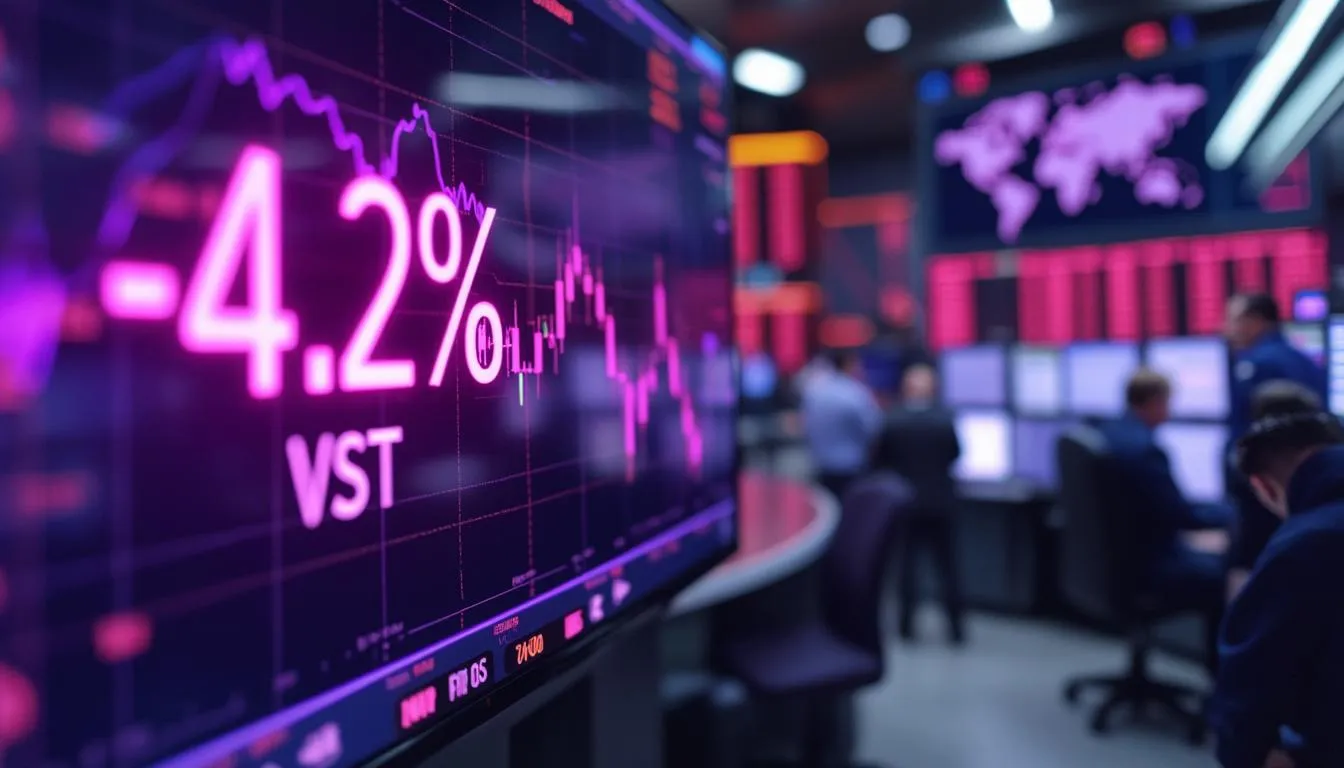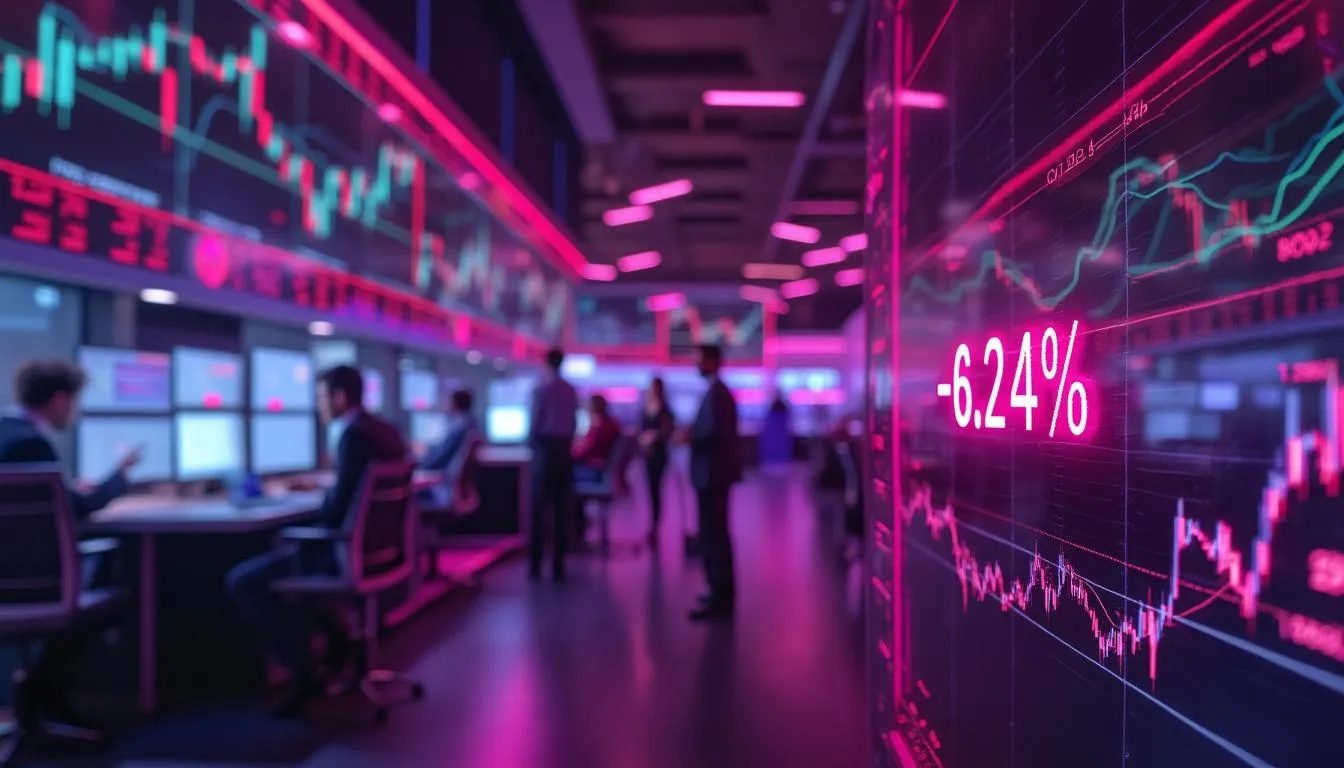Navigating Uncertainty: Why NextEra Energy’s Latest Selloff Signals More Than a Sector Soft Patch
In a trading session that saw broader equities advance, utilities giant NextEra Energy, Inc. (NEE) bucked the trend, falling nearly 2% on elevated volume even as peer renewables names posted modest gains. Long viewed as a bellwether for the U.S. clean energy transition, NextEra’s outsized decline stands out in a sector buffeted by shifting policy risks, supply chain challenges, and changing investor sentiment.
Key Takeaways
Session Performance: NEE closed down 1.95% at $69.51, with volume surging to more than 20.8M shares (well above average).
Sector Divergence: NextEra dropped as much as 5.2% intraday, diverging sharply from a rebound in other solar and renewables stocks.
Policy Overhang: Fresh proposals to raise taxes on clean energy projects post-2027—potentially by $7 billion—are weighing on sector leaders.
Strategic Strengths: Despite the selloff, NextEra’s robust regulated business, resilient renewables backlog, and disciplined capital allocation draw long-term interest.
Valuation Reset: The drop has pushed NEE’s yield and price multiples toward multi-year lows, prompting debate over risk and opportunity.
NextEra at the Epicenter: Business Model, Industry Position, and Recent Activity
NextEra Energy, Inc. is America’s largest utility by market capitalization, and a global leader in wind and solar development. Its business is split between its regulated utility Florida Power & Light (FPL)—the largest in the U.S.—and a rapidly expanding renewables portfolio via its NextEra Energy Resources subsidiary. This unique model has made NEE a core holding for ESG, income, and growth-focused investors alike.
Yet today’s market action underscores the challenges inherent to scaling U.S. clean energy. While the company’s stable utility earnings provide ballast, its outsized renewables exposure leaves it vulnerable to regulatory, fiscal, and geopolitical shocks—risks that have come to the fore amid the latest policy proposals.
What’s Moving the Needle? News, Policy, and Market Drivers
The stark underperformance of NEE this session comes on the heels of several headline developments:
Policy Uncertainty: According to CNBC, a new legislative proposal would sharply raise taxes on clean energy projects entering service after 2027, especially those sourcing significant components from China. The American Clean Power Association estimates a $4-7 billion tax hit, with the construction industry warning of up to 2 million job losses. Source
Market Divergence: As The Motley Fool notes, NextEra’s drop was notable even as “other solar stocks rallied,” suggesting a company-specific overhang beyond the sector-wide malaise. Source
Strategic Response: A Seeking Alpha analysis points to NextEra’s proactive efforts: “Financial resilience is evident through strong earnings, effective interest rate hedging, and disciplined capital allocation, supporting both growth and dividends.” Source
“Wind and solar projects that enter service after 2027 and exceed certain thresholds for Chinese components could see higher taxes, boosting the industry’s burden by an estimated $4 billion to $7 billion.” – American Clean Power Association (via CNBC)
Trading Session Breakdown: Price, Volume, and Volatility
NextEra’s Session in Numbers
Metric | Value |
|---|---|
Current Price | $69.51 |
Previous Close | $70.89 |
Intraday Low | $68.75* |
Intraday High | $72.06* |
% Change | -1.95% |
Volume | 20,884,592 |
3-Month Avg Volume | ~9.6M** |
*Intraday highs/lows estimated from session data.
**3-month average sourced from historical trading records.
Volume Spike: Today’s turnover was more than double the trailing average, signaling institutional repositioning or risk-off flows.
Volatility: The drop to $68.75 before partial recovery underscores heightened volatility linked to policy headlines.
Valuation, Yield, and the Long-Term Investor Lens
Recent weakness has pushed NEE’s dividend yield above 3.3%—a level not seen since the early 2020s. Forward price/earnings and price/cash flow multiples have also retreated toward their decade averages, reflecting both sector headwinds and idiosyncratic risk.
Dividend Profile: NextEra’s board recently reaffirmed its annual dividend increase guidance (roughly 10% through 2026), signaling confidence in cash flow stability despite macro uncertainty.
Relative Value: Compared to regulated utility peers still trading at premium multiples, NEE now offers a rare blend of yield and secular growth—albeit with higher perceived policy risk.
Analyst & Market Sentiment: Are the Bears Overstating the Risk?
Analyst Consensus
Recent Ratings: Despite volatility, most major sell-side analysts remain constructive, citing NextEra’s long-term renewables growth, cost discipline, and prudent hedging strategy.
Price Target Drift: Consensus 12-month price targets have edged lower over the past quarter, reflecting the re-rating of the entire sector but still implying meaningful upside from current levels.
Opinion Split
Bulls: Argue that today’s policy-driven selling is overdone, with NextEra’s scale and supply chain flexibility positioning it to adapt.
Bears: Warn that the company’s renewables backlog and capital investment plans are uniquely exposed to regulatory and interest rate shocks, meriting a valuation discount.
"NextEra’s valuation has reset, with a higher dividend yield and lower premium, creating an attractive entry point for long-term investors. The company is uniquely positioned for growth, balancing stable regulated earnings from Florida with a robust renewables backlog and strategic supply chain moves." – Seeking Alpha analyst
Policy Crosswinds: The Macro and Sector Context
The clean energy sector is at an inflection point. A potential reworking of federal incentives, heightened scrutiny of Chinese components, and macroeconomic volatility have sharply increased risk premiums across the utility and renewables landscape.
Tax Risk: The proposed tax changes, if enacted, could reshape project economics for years, disproportionately impacting sector leaders with the largest pipelines.
Labor and Domestic Content: The potential for job losses and domestic content requirements adds further uncertainty for capital allocation and supply chain planning.
Interest Rates: Rising rates have already eroded sector multiples. NextEra’s active interest rate hedging has partly mitigated this risk, but any further tightening could pressure project returns.
Conclusion: What NextEra’s Selloff Reveals for Sector Investors
NextEra’s sharp underperformance in a market up session is a cautionary signal for investors. The company’s scale, integrated business model, and history of execution remain formidable, but the new policy crosswinds inject a level of uncertainty not seen since the early days of the clean energy boom.
The key questions remain:
Is the current selloff an overreaction to policy noise, or a harbinger of deeper structural challenges for U.S. renewables?
Does the valuation reset present a long-term buying opportunity, or is it a sign to pare back exposure until regulatory clarity emerges?
Bottom Line: NextEra’s drop today is not just about one company, but a referendum on the trajectory of America’s clean energy transition amidst evolving fiscal and political realities. While the long-term secular case remains intact for those with patience and conviction, risk management and positioning are more critical than ever in the months ahead.

.svg)
.svg)
.svg)
.svg)

.svg)

.svg)
















